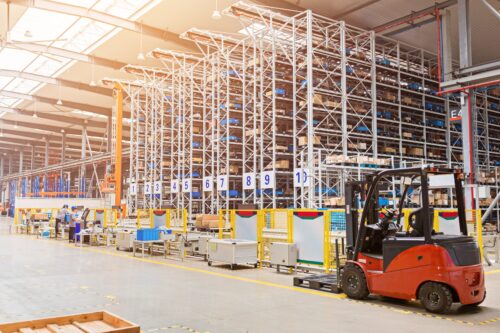Should your company be thinking about transitioning factory production in China to other, more favorable tariff countries like Vietnam? The economic rivalry between the United States and China has intensified, with trade disputes escalating into what many predict could be a prolonged trade war. The implications of higher tariffs on Chinese goods are far-reaching, not just for governments but for businesses and consumers globally. Importers, particularly in the U.S., face potential disruptions to their supply chains, rising costs, and uncertainty in market conditions. This analysis examines the current trajectory of the U.S.-China trade conflict, its potential impact on global trade, and proactive measures importers can take to mitigate the adverse effects of heightened tariffs.
The Context of the U.S.-China Trade Dispute
The U.S.-China trade conflict is rooted in long-standing issues such as intellectual property (IP) theft, trade imbalances, and differing economic systems. The United States has accused China of unfair trade practices, including state subsidies, currency manipulation, and lax IP enforcement, while China has criticized U.S. tariffs as protectionist measures undermining global trade norms.
Recent rounds of negotiations have yielded little progress, with both sides adopting increasingly hardline stances. The U.S. has threatened to impose tariffs as high as 25% on additional categories of Chinese imports, while China has hinted at retaliatory measures targeting U.S. exports and businesses operating in its markets.
Predictions for the Trade War
- Escalation of Tariffs
The U.S. is likely to expand its list of tariffed goods to include consumer electronics, automotive components, and other high-demand products. Tariff rates could rise to unprecedented levels, disrupting supply chains and increasing costs for businesses and consumers.
- Shift in Global Supply Chains
Companies will likely accelerate efforts to diversify their manufacturing bases, moving operations to other low-cost regions such as Vietnam, India, and Mexico. This trend could reshape global trade networks, reducing China’s dominance as the world’s factory.
- Impact on Inflation and Consumer Spending
Higher tariffs will increase the cost of imported goods, potentially leading to inflationary pressures in the U.S. economy. This could dampen consumer spending and disrupt market dynamics.
- Technological Decoupling
The trade war could extend beyond tariffs into technological decoupling, with both countries seeking to develop self-reliant ecosystems in critical industries such as semiconductors, AI, and telecommunications.
Impacts on U.S. Importers
The most immediate impact on U.S. importers is financial, as tariffs act as a tax on goods entering the country. This raises the landed cost of products, eroding profit margins and potentially making products less competitive in the marketplace. Importers also face increased compliance and administrative costs, as they must navigate complex regulations and consider alternative sourcing strategies.
Steps Importers Can Take to Plan for Tariff Increases: Shift to Vietnam
Relocating production from China to Vietnam involves a complex series of steps. By partnering with International Product Solutions (IPS), importers can streamline this process, leveraging IPS’s expertise and robust factory network in Vietnam. Below is an expanded guide detailing each step to ensure a smooth transition.
1. Evaluate Business Needs and Goals
Assess Product Requirements: Begin by thoroughly understanding your product specifications, including materials, manufacturing techniques, and quality benchmarks. Identify whether these requirements align with Vietnam’s manufacturing capabilities.
Define Transition Objectives: Outline clear goals for the move, such as reducing costs, diversifying supply chains, or mitigating tariff exposure. Consider long-term objectives like improving supply chain resilience or accessing regional markets.
Budget Planning: Calculate the costs associated with the transition, including scouting new suppliers, pilot production runs, shipping, and potential downtime. Factor in savings from reduced tariffs and operational costs in Vietnam.
How IPS Helps:
IPS conducts a comprehensive assessment of your business needs, providing detailed feasibility studies and actionable plans to align with your goals.
2. Research and Identify Potential Suppliers
Supplier Identification: Use IPS’s extensive database of pre-vetted factories to find manufacturers specializing in your product category. Focus on factories with proven expertise in your industry.
Evaluate Manufacturing Capabilities: Analyze the technical abilities, production capacity, and scalability of shortlisted suppliers to ensure they can meet both current and future demands.
Verify Compliance: Ensure that the factories comply with Vietnamese labor laws, environmental regulations, and international quality standards such as ISO certifications.

How IPS Helps:
IPS conducts rigorous factory audits and inspections, evaluating suppliers on technical capabilities, ethical practices, and sustainability standards to ensure alignment with your brand values.
3. Conduct a Pilot Production Run
Prototype Development: Work with the selected factory to produce prototypes or samples. This allows you to assess their ability to meet design and quality expectations.
Small-Scale Testing: Run an initial small-scale production batch to evaluate factory performance under real-world conditions, including adherence to deadlines and defect rates.
Quality Assurance: Implement inspection checkpoints throughout the pilot run to identify and resolve issues early.
How IPS Helps:
IPS coordinates pilot production runs, acting as a liaison between you and the factory to ensure smooth communication. Their quality control teams provide real-time feedback to prevent costly errors during mass production.
4. Negotiate Contracts and Agreements
Transparent Pricing: Collaborate with the factory to negotiate transparent pricing structures that reflect both production costs and quality expectations.
Define Clear Terms: Draft detailed contracts outlining production schedules, quality standards, payment terms, and dispute resolution mechanisms.
Protect Intellectual Property: Include robust IP protection clauses to safeguard your designs and proprietary technologies during and after the transition.
How IPS Helps:
IPS leverages its experience in negotiating contracts with Vietnamese factories to secure favorable terms while ensuring compliance with local regulations and international trade laws.
5. Manage Logistics and Shipping
Shipping Route Optimization: Identify the most efficient shipping routes and methods to minimize costs and transit times. Vietnam’s proximity to major shipping lanes makes it a strategic hub for exports.
Customs and Documentation: Ensure all export and import documentation is accurate to avoid delays. Classify goods under the appropriate Harmonized Tariff Schedule (HTS) codes for duty savings.
Warehousing and Distribution: Consider setting up local warehousing or distribution facilities in Vietnam to streamline logistics and reduce lead times.
How IPS Helps:
IPS offers end-to-end logistics management, including freight forwarding, customs clearance, and warehousing solutions. Their local expertise ensures compliance with regulations and minimizes logistical disruptions.
6. Implement Quality Control Measures
Inspection Protocols: Establish robust inspection protocols for pre-production, in-process, and final product inspections to ensure quality standards are met.
Testing and Certification: Obtain necessary product certifications for importing to target markets, such as CE, FCC, or FDA approvals.
Continuous Oversight: Maintain an ongoing presence in the factory to address potential issues proactively and ensure that quality remains consistent over time.
How IPS Helps:
IPS’s on-the-ground teams in Vietnam implement and manage quality control processes, using state-of-the-art tools and techniques to guarantee that your products meet specifications and regulatory requirements.
7. Transition Gradually to Mitigate Risks
Phased Production Shift: Begin by transitioning a portion of your production to Vietnam. This allows you to evaluate the new supply chain without fully disrupting your existing operations in China.
Backup Options: Retain some capacity in China or another country as a safety net during the initial stages of the transition.
Scale Gradually: Once confidence in Vietnamese operations is established, gradually increase production volumes and phase out dependency on higher-cost or higher-risk suppliers.
How IPS Helps:
IPS manages the phased transition, coordinating timelines, managing dual operations during the overlap period, and resolving any logistical or production challenges that arise.
8. Build Long-Term Supplier Relationships
Develop Mutual Trust: Foster strong, transparent relationships with your Vietnamese suppliers to improve collaboration and flexibility in addressing challenges.
Cultural Sensitivity: Understand and respect local business etiquette, such as meeting formalities and decision-making processes, to build goodwill.
Supplier Development: Invest in supplier training and capability enhancement programs to improve efficiency and align processes with your long-term business goals.
How IPS Helps:
IPS acts as a bridge between your company and local suppliers, facilitating clear communication, resolving disputes, and creating opportunities for ongoing collaboration and growth.
9. Monitor and Optimize the New Supply Chain
Performance Monitoring: Regularly assess supplier performance against key metrics such as lead times, defect rates, and cost-effectiveness.
Adapt to Changes: Stay informed about market trends, regulatory updates, and geopolitical developments that could impact your supply chain.
Process Improvement: Continuously seek opportunities to optimize manufacturing, logistics, and supplier relationships to enhance overall efficiency and competitiveness.

How IPS Helps:
IPS provides ongoing support for supply chain management, offering analytics and insights to help you make informed decisions and adapt to changing conditions effectively.
Conclusion
By following these detailed steps and partnering with IPS, importers can successfully transition production from China to Vietnam. IPS’s comprehensive expertise in supplier identification, logistics management, quality assurance, and long-term relationship building ensures a seamless and efficient shift. This proactive approach not only mitigates risks but also positions businesses to thrive in a rapidly evolving global trade environment.
Contact Us







